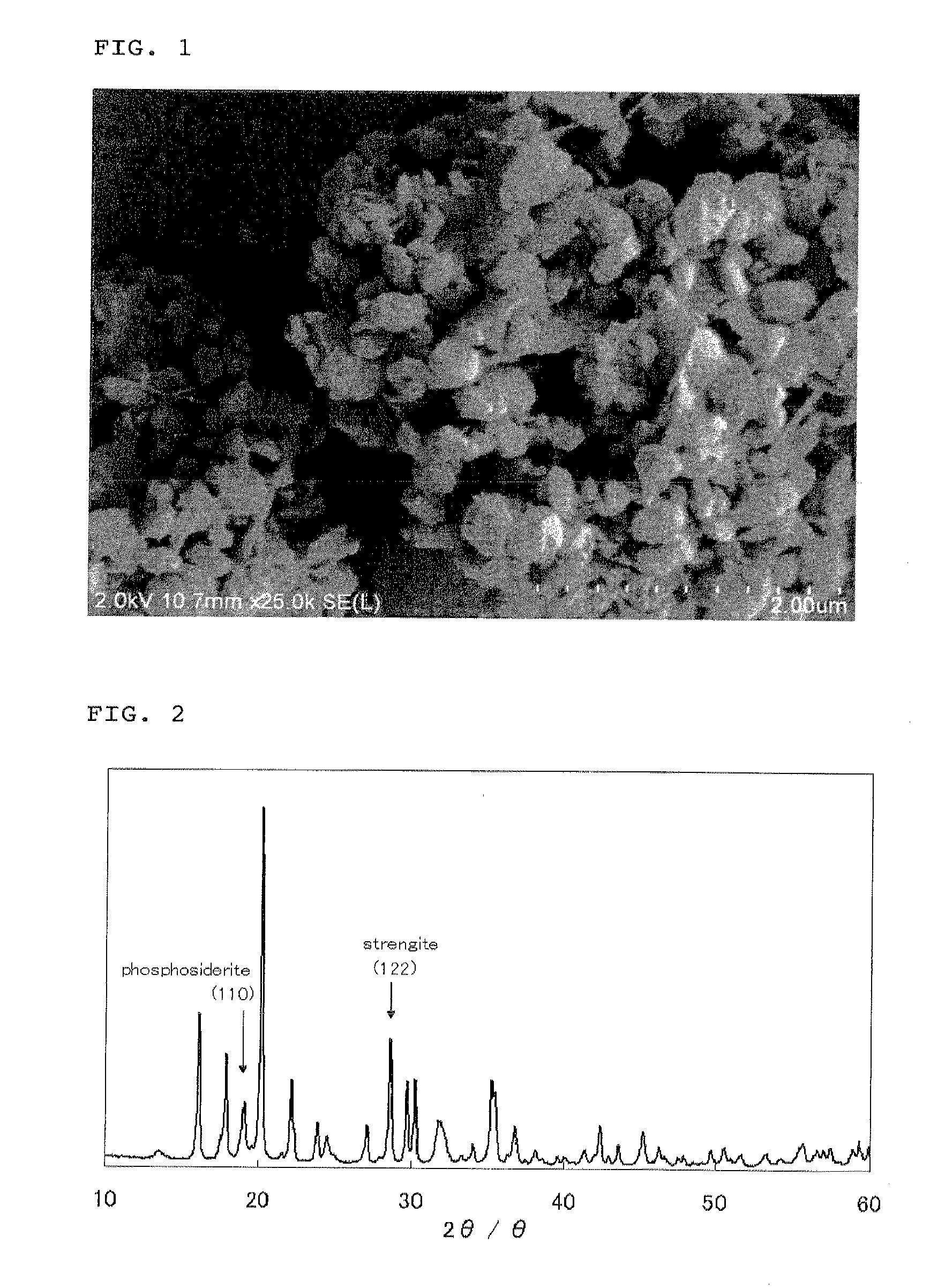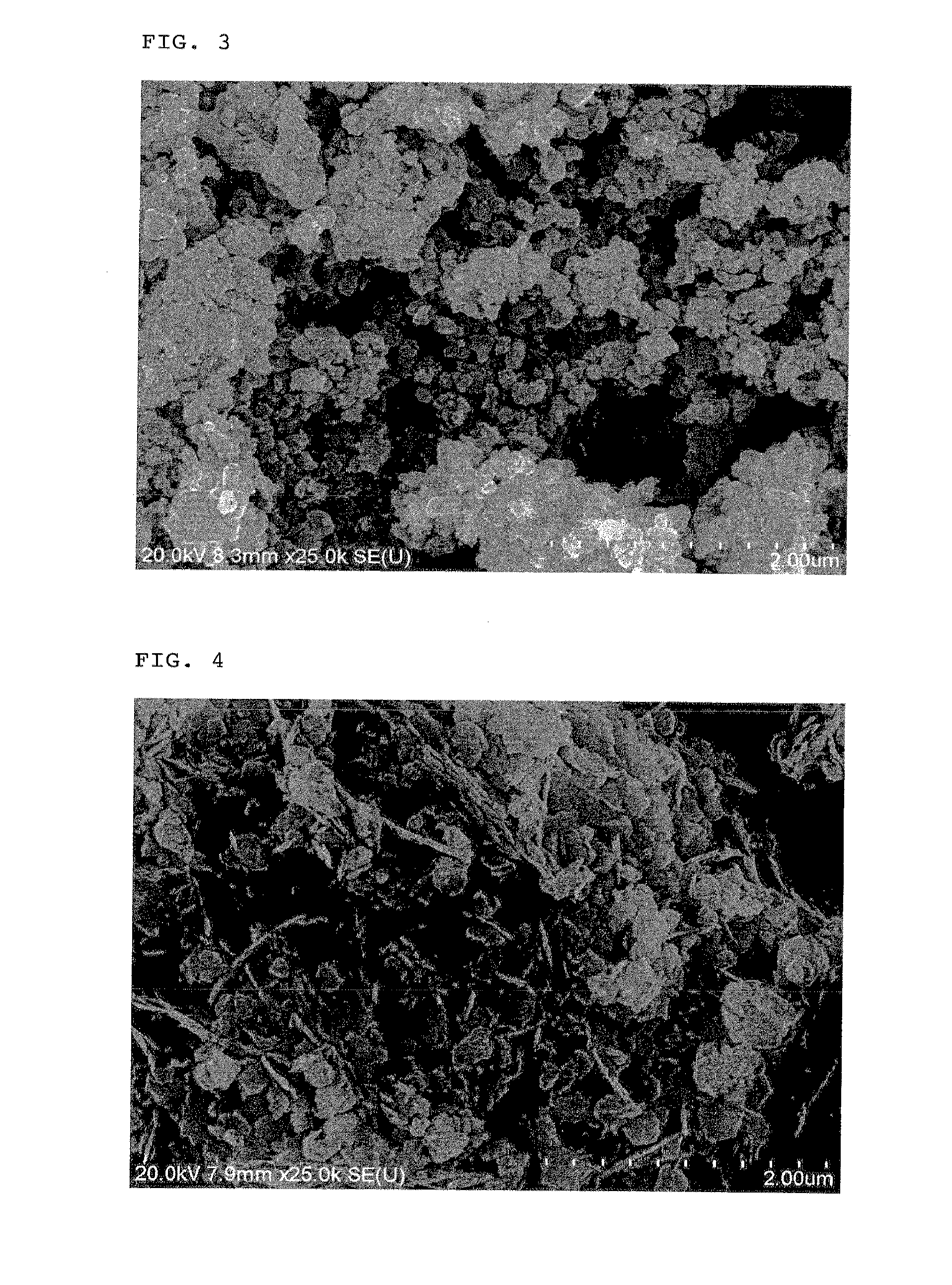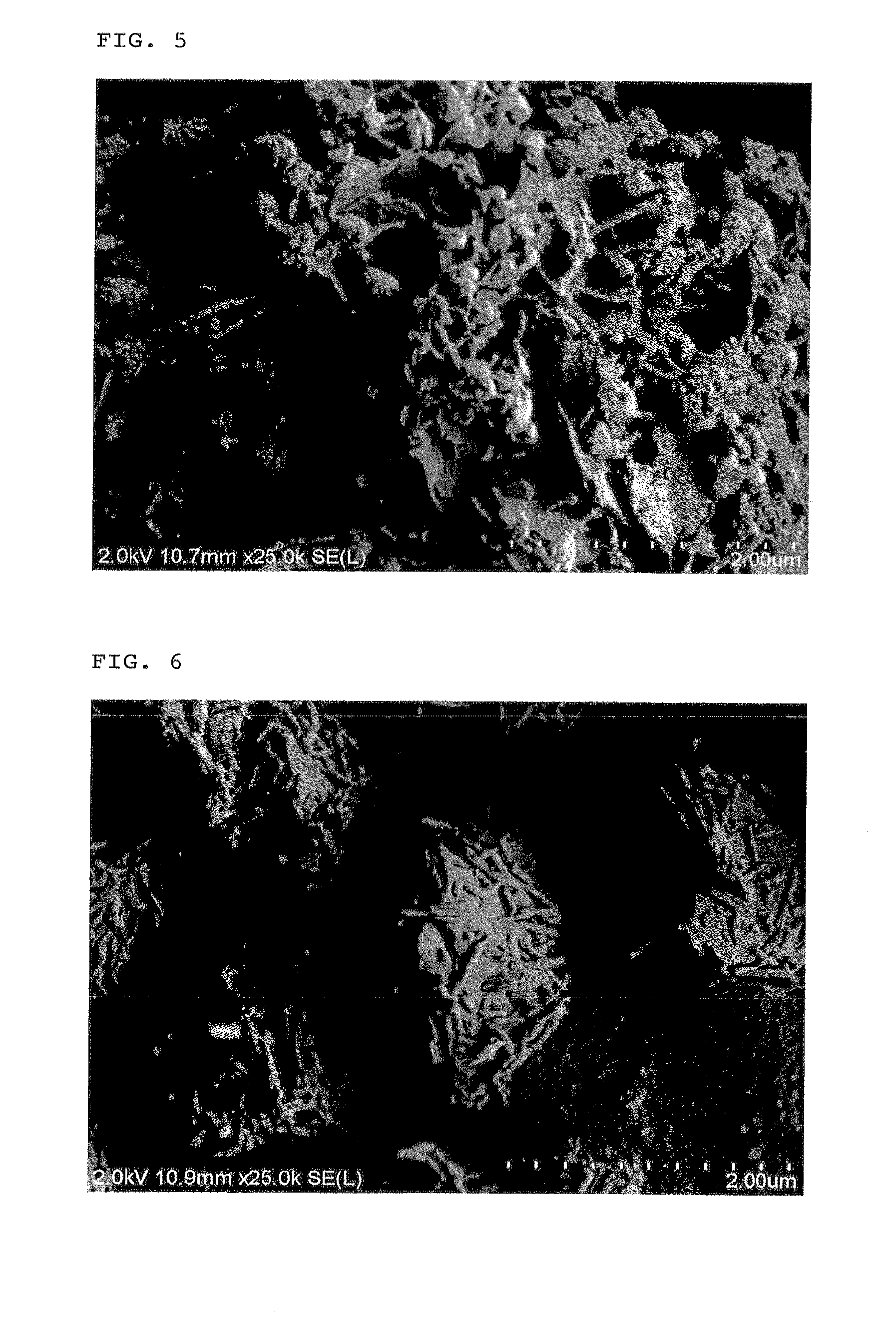Ferric phosphate hydrate particles and process for producing the same, olivine type lithium iron phosphate particles and process for producing the same, and non-aqueous electrolyte secondary battery
a technology of ferric phosphate and iron phosphate, which is applied in the direction of cell components, final product manufacturing, sustainable manufacturing/processing, etc., can solve the problems of iron oxalate being too expensive, no method of ferric phosphate hydrate production, and no method of reducing the amount of impurities in ferric phosphate hydrate, etc., to achieve low cost, less deviation, and small content
- Summary
- Abstract
- Description
- Claims
- Application Information
AI Technical Summary
Benefits of technology
Problems solved by technology
Method used
Image
Examples
example 1-1
[0129]A heating type mixing stirrer was charged with 1147 g of a 25% slurry of iron oxide hydroxide particles having a BET specific surface area of 98.5 m2 / g, and an orthophosphoric acid solution was added thereto while stirring such that the molar ratio P / Fe was 1.1. The liquid amount of the resulting mixed slurry was adjusted to a volume of 10 L by adding ion-exchanged water thereto such that the reaction concentration based on an iron concentration thereof was 0.3 mol / L. Thereafter, the resulting slurry was heated to 60° C. while rotating an agitation blade of the stirrer at a peripheral speed of 2.8 m / s and a rotating speed of 900 rpm and therefore while subjecting the slurry to high-speed stirring, and the contents of the mixing stirrer were reacted for 16 hr under the condition that the temperature therein was held at 60° C. After completion of the reaction, the slurry was withdrawn from the mixing stirrer, washed with water in an amount of three times the volume of the slurry...
example 2-1
[0134]A zirconia planetary ball mill pot was charged with 35 g of the ferric phosphate hydrate particles obtained in Example 1-1, 8.15 g of lithium hydroxide monohydrate, 4.32 g of sucrose and 120 mL of ethanol and further with 450 g of φ3 mm zirconia beads, and the contents of the pot were subjected to wet mixing and pulverization treatment at 300 rpm for 2 hr. The slurry obtained after the pulverization treatment was subjected to solid-liquid separation using a Nutsche, and the thus separated solid was dried at 80° C. for 6 hr using a dryer.
[0135]The resulting dried product was deaggregated using a mortar, and calcined in a nitrogen atmosphere at 725° C. for 3 hr and then passed through a 75 μm-mesh sieve to obtain olivine type lithium iron phosphate particles.
[0136]It was confirmed that the resulting calcined product had a BET specific surface area of 31.8 m2 / g, a tap density of 0.75 g / cc, a carbon content of 2.70% by weight and an Na content of 70 ppm. As a result of the observa...
example 1-2
[0137]The same reaction procedure as defined in Example 1-1 was conducted except that the wet reaction temperature was changed from 60° C. to 80° C., thereby obtaining a reaction product.
[0138]As a result of subjecting the resulting particles to powder X-ray diffraction measurement, it was confirmed that the obtained particles were ferric phosphate hydrate particles comprising a compound consistent with a strengite crystal structure as a main first phase and a compound consistent with a meta-strengite (phosphosiderite) crystal structure as a second phase, and had a (122) / (110) peak intensity ratio of 1.07, and further comprised no impurity phase.
[0139]It was also confirmed that the obtained particles had a BET specific surface area of 13.8 m2 / g and an Na content of 16 ppm. Further, since the molar ratio P / Fe of the particles was 0.98, it was confirmed that the resulting ferric phosphate hydrate particles had a molar ratio P / Fe extremely near to a theoretical composition thereof.
[014...
PUM
| Property | Measurement | Unit |
|---|---|---|
| molar ratio | aaaaa | aaaaa |
| particle diameter | aaaaa | aaaaa |
| tap density | aaaaa | aaaaa |
Abstract
Description
Claims
Application Information
 Login to View More
Login to View More - R&D
- Intellectual Property
- Life Sciences
- Materials
- Tech Scout
- Unparalleled Data Quality
- Higher Quality Content
- 60% Fewer Hallucinations
Browse by: Latest US Patents, China's latest patents, Technical Efficacy Thesaurus, Application Domain, Technology Topic, Popular Technical Reports.
© 2025 PatSnap. All rights reserved.Legal|Privacy policy|Modern Slavery Act Transparency Statement|Sitemap|About US| Contact US: help@patsnap.com



